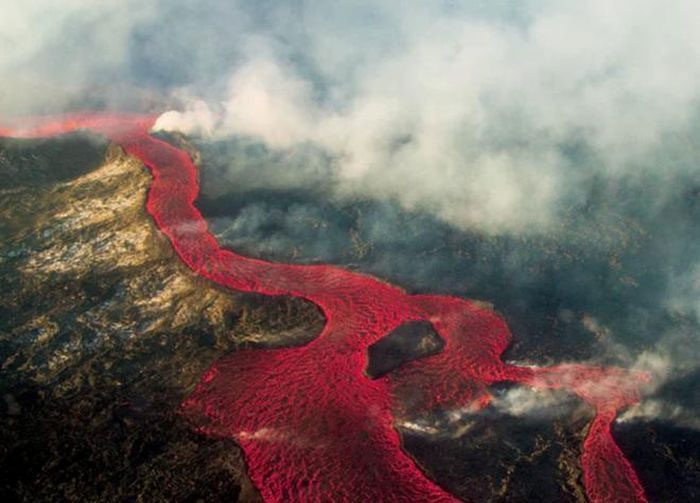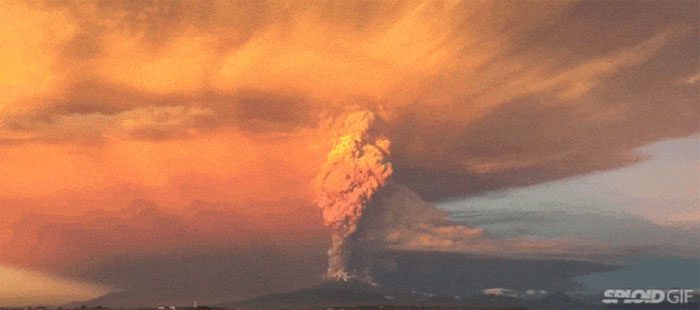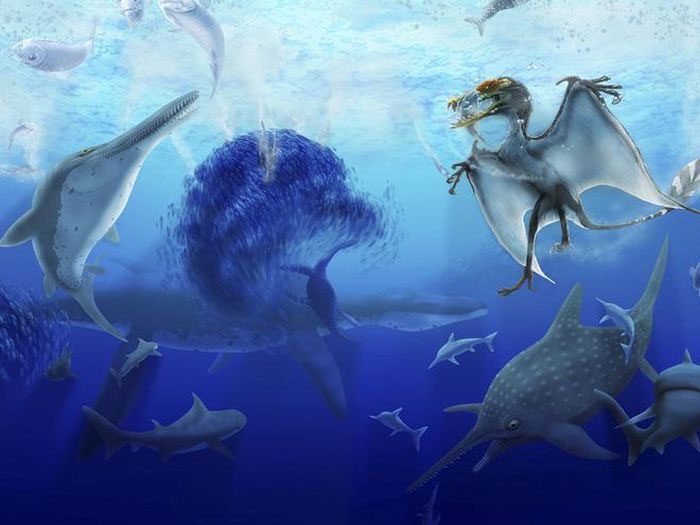The explosion created an incredibly favorable environment for various species. And when it disappeared, everything came to an end.
252 million years ago, the Permian-Triassic extinction event is still considered the most catastrophic extinction disaster the Earth has ever witnessed. 90% of marine species and 70% of terrestrial vertebrates vanished. The severity of this disaster is such that modern scientists refer to it as the Great Dying.
There are still many unanswered questions surrounding this disaster, from the timing of its occurrence to the causes behind it. However, recent research has provided a deeper insight into this catastrophe: there was a massive surge of oxygen in the oceans at the same time the event began.

The Great Dying event over 250 million years ago. (illustrative image).
Researchers indicate that this oxygen explosion seems to have lasted for about 10,000 years from the onset of the Great Dying, followed by a gradual decline.
“Geological records suggest these events occurred simultaneously,” said Sean Newby, a geologist from Florida State University (FSU).
“We can then compare it to the modern era — where climate change is driven by human activity but only occupies a small fraction of the time compared to the periods of mass extinctions.”
Of course, measuring ancient oceanic oxygen levels is not straightforward. The research team analyzed the amounts of buried thallium isotopes in sediment layers to calculate the chemical composition of seawater from millions of years ago.
Previously, experts had observed a decline in oceanic oxygen levels during the Permian-Triassic period, but a sudden oxygen explosion like this had never been documented.
But why did this phenomenon occur, and what does it mean? The research team suggested that a sudden increase and decrease in oxygen levels could pose greater dangers to marine species than a gradual decline in oxygen.

The sudden increase in CO2 levels in the atmosphere appears to be a cause of the Great Dying.
“We were quite surprised to see the increase in oxygen coinciding with the timing of the Great Dying, followed by a gradual decline.”
In the future, scientists will conduct additional studies using similar methods to observe past mass extinction events to determine if similar phenomena occurred.
According to scientists’ estimates, the sudden increase in CO2 levels in the atmosphere seems to be a cause of the Great Dying, likely originating from volcanic ranges in Siberia. Understanding this oxygen explosion could provide crucial information for assessing the impact of the climate crisis humanity faces today.

Marine species struggle to adapt when oxygen levels in the water suddenly increase and then decrease.
“The subsequent drop in oxygen levels is quite significant, as living organisms had adapted to an environment with excessively high oxygen concentrations. Any sudden changes could have a very strong impact.”
The research was published in the journal Nature Geoscience.





















































